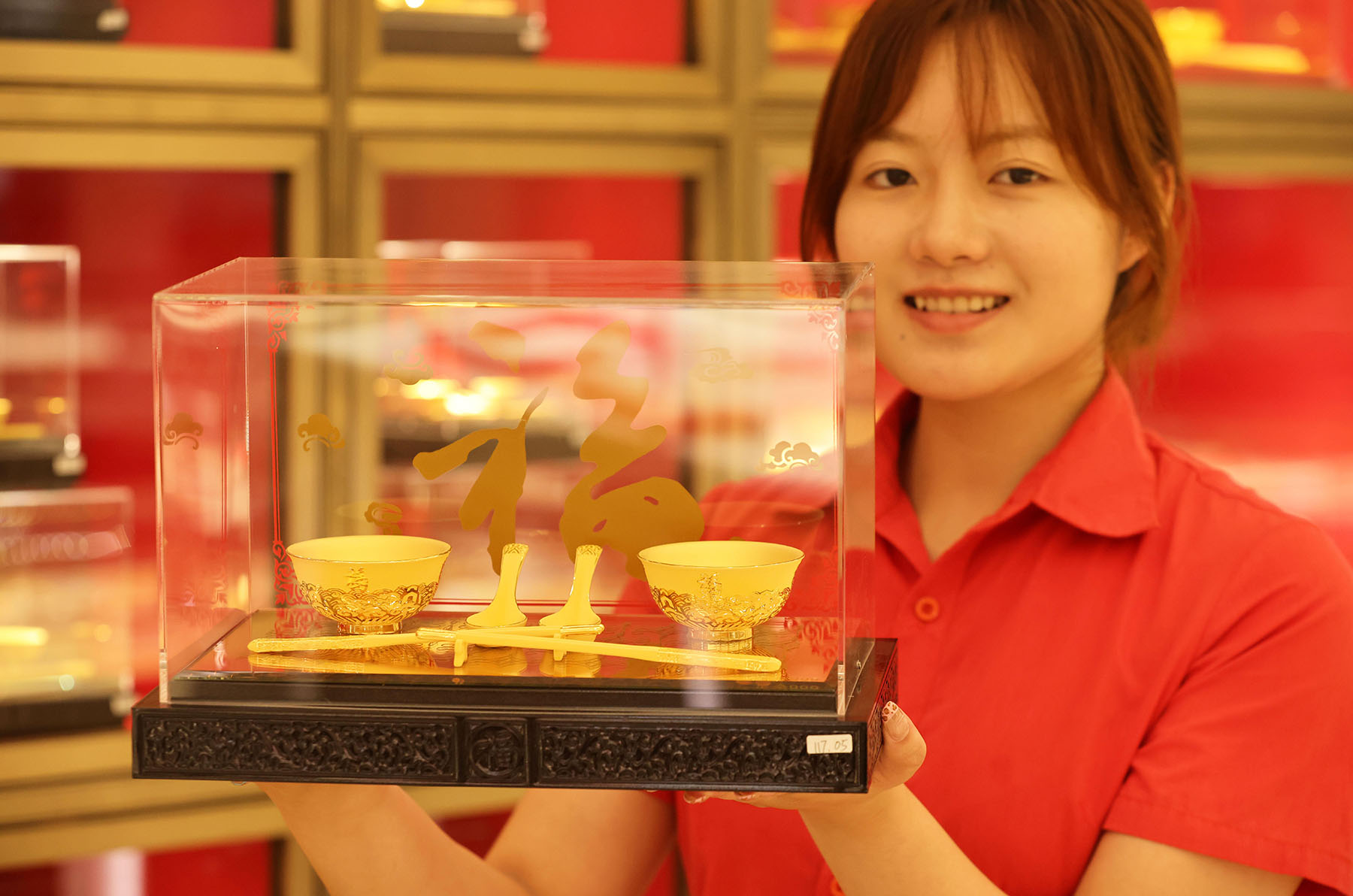
The Chinese gold market, which is evolving from a follower to a leader, is expected to play a bigger role globally in the years to come, said the top executive of the World Gold Council.
"Thanks to strong Chinese economic growth over the past decades, China has secured a leading position in the global gold market. For over 10 consecutive years, China has been the world's largest gold consumer. And for an impressive 15 consecutive years, it has been the world's largest gold producer," said David Tait, CEO of the WGC.
Tait said China's incredible achievements highlight the country's crucial role and influence in shaping the future of the global gold industry. China has an influence that, in his opinion, should extend beyond its borders.
READ MORE: World Gold Council CEO: China to drive gold market innovation
"Especially in key areas such as gold bar integrity, digitalization ...and by bringing your own views to responsible supply chains and artisanal mining, issues of responsibility involve all of us here today," Tait said.
The remarkable progress of the Chinese gold market mirrors this rapid development and should act as an example to the rest of the world that anything is possible "as we pursue our own gold reforms", he said.
Tait further said the 2024 midyear outlook report showed that gold has had an exceptional year so far, with the price in US dollar terms rising by 12 percent during the first half.
"This impressive growth has outpaced most other asset classes, driven by sustained central bank purchases, robust consumer demand in Asia, ever burgeoning global debt, fear of currency debasement and the obvious ongoing geopolitical uncertainties."
These uncertainties continue to highlight gold's role as a safe-haven asset as well as have an impact on the global gold market.
Backed by rising demand for over-the-counter transactions, persistent central bank buying and slowing outflows of gold-backed exchange-traded funds, gold prices were driven to a record quarterly average of $2,338 per ounce in the second quarter, up 18 percent year-on-year.
Following the global price rise, the domestic gold market showed a divergent performance in consumption and investment.
In the second quarter, demand for jewelry in China hit the lowest same-time level since 2009, with a quarterly demand for a mere 86 metric tons, and Chinese jewelry consumption fell 18 percent year-on-year to 270 tons in the first half, according to the WGC.
ALSO READ: China's appetite for gold investment up in Q2
The withering demand contrasted with demand for investment in the Chinese market, as bar and coin investment demand surged 62 percent year-on-year to 80 tons in the second quarter — the strongest second-quarter performance since 2013. Total investment requirements in the first half surged 65 percent year-on-year to 190 tons, WGC data showed.
As the gold rally is expected to continue, Tait said he believes the dip in jewelry will not last too long, and investment in gold bars and coins will stay because he sees big potential in gold investment, including bars and coins as well as gold ETFs.
Several factors have boosted the gold market sentiment, including the constant new price highs, concerns about geopolitics, rising expectations for interests rate cuts in major economies and central banks' constant buying, said Zhou Maohua, an analyst with China Everbright Bank, in an interview with China Business Journal.


